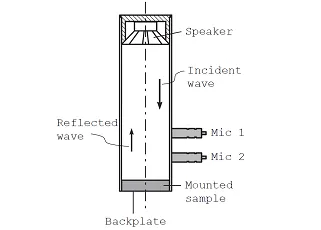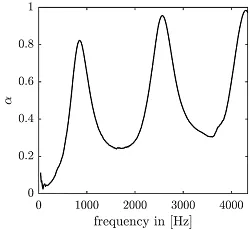

We investigate modelling of sound propagation in porous media and granular materials. This requires the knowledge of several intrinsic material parameters, some of which are difficult or only indirectly measurable. This is especially true if the pore sizes vary strongly and the pores are randomly connected. The parameters resulting from our research involving sound propagation models are applicable in fields such as noise control, non-destructive material testing, and heat transfer.
We determine acoustic quantities such as absorption, impedance, and reflection with an impedance tube setup. It is a core part of our research to employ the inverse acoustic models using these measurements and with assuming a rigid frame. Now, theoretical and empirical models for porous media and granular materials provide insights into non-acoustic properties such as flow resistance, tortuosity and pore sizes. However, the accuracy of this method depends strongly on the input parameters and the chosen model. While the inverse models efficiently extract the intrinsic properties of the media, it is often unclear how accurately the acoustic models map to the individual material properties. Therefore, our investigations aim towards the prediction of key pore characteristics of granular and porous media by means of acoustic characterisation methods and towards showing that the results are comparable to the prediction using FEM simulations